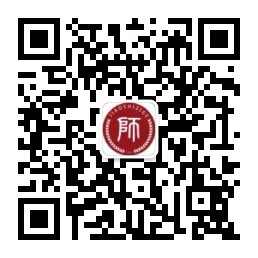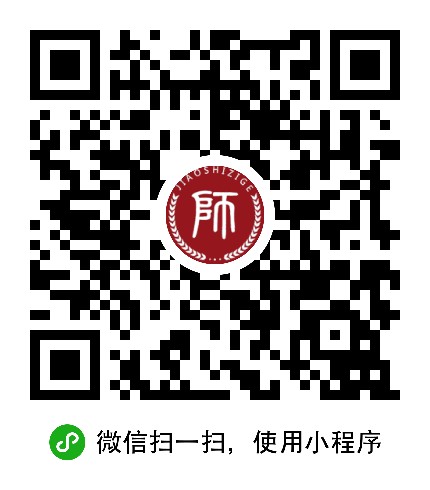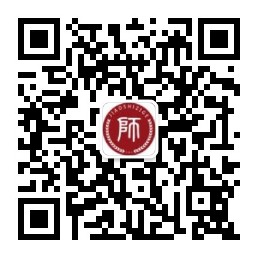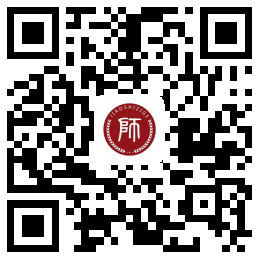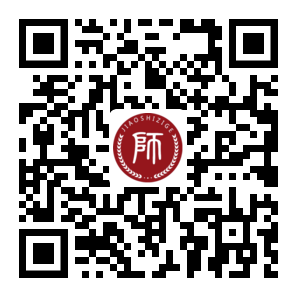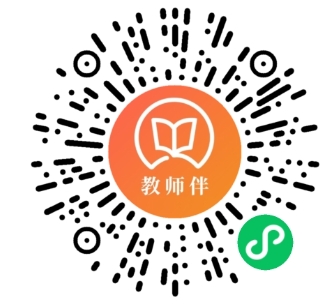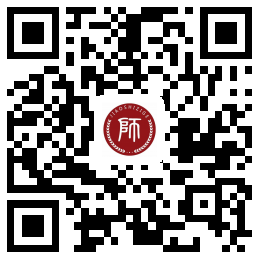上海中学教师全国教师资格统考《英语学科知识与能力(初中)》模拟试卷一
- 时间:
- 2018-10-25 11:41:25
- 作者:
- 邹老师
- 阅读:
- 来源:
- 上海教师资格证




在每小题列出的四个备选项中选择一个最佳答案,错选、多选或未选均无分。
1. We’ve had a good start, but next, more work needs _____ to achieve the final success.
A. being done B. do C. to be done D. to do
2. Don’t worry. The hard work that you do now _____ later in life.
A. will be repaid B. was being repaid
C. has been repaid D. was repaid
3. Time, _____ correctly, is money in the bank.
A. to use B. used C. using D. use
4. Bicycling is good exercise; _____, it does not pollute the air.
A. nevertheless B. besides C. otherwise D. therefore
5. Close the door of fear behind you, and you _____ the door of faith open before you.
A. saw B. have seen C. will see D. are seeing
6. The place we live in is called house in English but 房子 in Chinese. This shows the ______ of language.
A. arbitrariness B. duality C. creativity D. displacement
7. In Chinese if someone breaks a bowl or a plate the host or the people present are likely to say sui sui ping an. This language phenomenon reflects the ______ of language.
A. Performative Function B. Emotive Function
C. Phatic Function D. Recreational Function
8. Both syntax and semantics are the branches of linguistics, the former studies the rules governing the combination of words sentences, the latter studies _____.
A. the form of words B. the meaning of language
C. the sound patterns of language D. the change of language
9. A syllable is a part of a word which contains a _____ and is pronounced as a unit.
A. consonant B. vowel C. phoneme D. pitch
10. The most distinguishable linguistic feature of a regional dialect is its _____.
A. accent B. use of words C. morphemes D. use of structures
11. In meaningful practice the focus is on the production, comprehension or exchange of ___.
A. structures B. sentences C. form D. meaning
12. PPP and TBL are two approaches to language teaching. PPP stands for presentation, practice and production, and TBL stands for _____.
A.Task Book Language stands B.Text Book Learning
C.Teacher-Based Learning D.Task-Based Learning
13.Hedge discusses five main components of communicative competence. These components include linguistic competence, pragmatic competence, discourse competence, strategic competence, and _____.
A. accuracy B. fluency C. correctness D. grammaticality
14. _____ does not belong to formative assessment.
A. Learner portfolio B. Test results
C. Classroom observation D. Student diaries
15.What is the teacher doing in terms of error correction?
“S: I go to the theatre last night.”
T: You GO to the theatre last night?
A. Correcting the student’s mistake.
B. Hinting that there is a mistake.
C. Encouraging peer correction.
D. Asking the student whether he really went to the theatre.
16. When learners come across new words, they are required to focus on _____.
A. spelling B. semantic features
C. form, meaning and use D. word formation
17. Which of the following features is not exhibited by the deductive method?
A. It saves time.
B. It pays more attention to form.
C. It teaches grammar in a decontextualized.
D. It encourages students to work out the grammatical way rules.
18. _____ may be defined as any kind of engaging with the language on the part of the learners, usually under the teacher supervision, whose primary objective is to consolidate learning.
A. Presentation B. Practice C. Production D. Preparation
19. The activity of _____ may maximize the possibility of eliciting ideas, words or concepts from students when it is focused on a given topic.
A. retelling B. assessing output
C. brainstorming D. comprehension
20. Which of the following nominating patterns can a teacher adopt to ensure that all students are activity involved in classroom activities?
A. Nominating those who are good at English.
B. Asking questions in a predicable sequence.
C. Nominating students after the question is given.
D. Nominating students before giving the question.
请阅读Passage 1,完成21~25小题。
Passage 1
How quickly can you count from one to ten? Do you use ten different words to do it? Can you do it in English, or do you have to use your first languages? Do you count on your fingers? Many people think that numbers and math are the same all over the world. But scientists have discovered that it is not true.
People in different parts of the world use different ways to count on their fingers. In the United States, people think begin counting with their first fingers, which they extend or stick out. They then extend the rest of their fingers and finally the thumb(拇指) to count to five. Then they repeat this with the other hand to get to ten. In China, people count by using different finger positions. In this way, a Chinese person can easily count to ten on only one hand.
Besides ways of finger counting, scientists have found that cultures and languages are also different when it comes to numbers. Some languages have only a few words for numbers, and others have no words for numbers. A group of scientists studied aboriginal(土著的) people in Australia. These people don’t have hand movements to stand for numbers. They don’t even have word for numbers. However, they are still able to understand different ideas about numbers.
In a similar study, researchers from the Massachusetts Institute of Technology discovered that people of the Piraha tribe (部落) in northwestern Brazil don’t have words for numbers such as “one” or “three.”. They are not able to say “five trees” or “ten trees” but can say “some trees,” “more trees,” or “many trees.” Professor Edward Gibson said that mist people believe that everyone knows how to count, “but here is a group that does not count. They could learn, but isn’t not useful in their culture, so they’ve never picked it up.”
Although all humans are able to understand quantities(数量),not all languages have numbers and not all people use counting. Number words in a certain language are a result of people needing numbers in their daily lives. Now we know that people have different ideas about numbers and math, too.
21. The writer begins with the four questions in order to _____.
A. make a survey B. interest readers
C. tell a story D. solve math problems
22. What do we learn from the difference in finger counting between the U.S. and China?
A. People from China count much faster than people from the U.S.
B. People from China need two hands to count from one to ten.
C. People of different cultures may use different ways of finger counting
D. People of different cultures use the same way of finger counting.
23. Which of following is true about aboriginal Australians?
A. They have only a few words for numbers
B. They have hand movements to stand for numbers
C. They can only count to five on their fingers
D. They can understand different ideas about numbers
24. The study of the Piraha tribe shows that _____.
A. people all over the world know how to count
B. People of the tribe have words for number
C. Some groups of people are not smart enough to count
D. Counting is not useful in the culture of the tribe
25. What is the main idea of the passage?
A. people from different cultures have different ideas about numbers and math
B. Chinese people can count more easily on their fingers than Americans
C. In some aboriginal culture,p eople don’t even know how to count
D. Some languages don’t have number words because people don’t need numbers.
请阅读Passage 2,完成26~30小题。
Passage 2
It’s really a tough job for automakers doing marketing and sales in China, where competition is acute and customers have little loyalty. They have tried a range of tricks in recent years.
But there should be a moral bottom line. Unfortunately, a Buick dealership used the tragedy of a two-month-old infant to advertise its cars last week on Weibo – Micro blog. And Hyundai Motor followed suit.
On March 4, an SUV was stolen with the infant left inside alone in the northeastern city of Changchun. The news spread widely on Weibo after the baby’s father called the local police and radio station for help. The next day it was revealed that the infant was choked to death and buried in snow by the thief. The online community expressed its deeply felt sympathy and condolences.
The Buick dealership posted a photo of the baby and two of its cars on its official Weibo account to advertise its GPS system that can locate the stolen car. “A few thoughts on the Changchun stolen car and baby incident: when buying a car it’s entirely OK to choose a brand with advanced technology,” said the post. Though the post was made before tragic fate of the infant was known, the action generated a storm of outrage on Weibo. Some online commentators said it is “marketing at the cost of lives” and “extremely despicable.”
Worse was the post on Hyundai’s official Weibo account that advertised the anti – theft system on its new SUV Santa Fe, an entry made after the child was known to have died. The action also enraged micro bloggers.
Both posts were soon deleted. The Buick dealership made an apology on Weibo to the family of the victim and the public. But screenshots saved by users continued to be posted and the negative impact on both brands persists.
The two brands probably didn’t expect such a firestorm of fury from the Internet community, but they really made a big mistake sinking below the moral bottom line. They certainly ruined their own brand images.
The Chinese have the same proverb as the English language—a little leak will sink a great ship. It takes decades to build the great ship of a respectable brand but it can take just a moment of negligence to make it fail completely.
For those in corporate marketing, two lessons should be learned: first, be careful in the era of social media when one wrong can be easily magnified and have disastrous impacts in just a few clicks.
Second and more importantly, think with your brain and heart. Never break the moral bonds of respect for human life and sympathy for our fellow man.
26. Who is to blame for the tragedy of Changchun infant according to the passage?
A. The baby’s father B. Buick and Hyundai dealership
C. Weibo D. Not clear
27. Which of the following statements is correct?
A. The missing infant was found alive in the stolen car.
B. Micro blog marketing of tragic infant death fuels firestorm of criticism.
C. People can’t see the two posts any more because they were deleted.
D. The two car brands mentioned in the passage spoiled their own reputation by selling the stolen car.
28. What does the underlined word “despicable” in paragraph 4 mean?
A. Immoral B. Important C. Distinguished D. Considerable
29. The reason why Hyundai’s post was worse than Buick’s is that _____.
A. Hyundai dealership didn’t make an apology on Weibo
B. Buick dealership expressed its deeply sympathy and condolences
C. Hyundai’s post was made after people knew the infant had died
D. Buick’s car was more advanced on its GPS system
30. In the last paragraph, the author encourages people _____.
A. not to sink below the moral bottom line
B. not to sympathize our fellow man
C. to think twice before making decision
D. to magnify the mistakes people make
二、简答题(本题共1小题,20分)
根据题目要求完成下列任务,用中文作答。
在英语课程教学过程中,常用的英语教学法有哪几种?(6分)在实际选用教学法时,应注意哪些注意事项?(14分)
三、教学情境分析题(本大题1小题,30分)
根据题目要求,完成下列任务,用中文作答。
在学习 An old man tried to move the mountains一课时,教师在授课之前和学生进行了如下的对话:
T:Boys and girls, look at the PPT here, who can tell me what’s this?
(Showing them the picture of Monkey King )
S: The Monkey King1
T:Yes, right, who can tell me something about him?
S:.......
T: Ok, good, today we are going to learn something about these kind of person, let’s turn to page...
1.这是课堂教学的哪一个环节?请评价一下该教师这一环节的设计?(10分)
2.请简述这一环节的作用。(12分)
3.请列举超过三种的设计这一环节的方法。(8分)
四、教学设计题(本大题1小题,40分)
根据提供的信息和语言素材设计教学方案,用英文作答。
设计任务:请阅读下面学生信息和语言素材,设计一节20分钟的英语阅读课的教案。教案没有固定格式,但须包含下列要点:
● Teaching objectives
● Teaching contents
● Major steps and time allocation
● Activities and justifications
教学时间:20分钟
教学材料:
Over time I have been changed quite a lot. I began as a calculating machine in France in1642. Although I was young I could simplify difficult sums. I developed very slowly and it took nearly two hundred years before I was built as an analytical machine by Charles Babbage. After I was programmed by an operator who used cards with holes, I could “think”logically and produce an answer quicker than any person.At that time it was considered a technological revolution and the start of my “artificialintelligence”. In 1936 my real father, Alan Turing, wrote a book about how I could be made to work as a “universal machine” to solve any difficult mathematical problem. Fromthen on, I grew rapidly both in size and in brainpower. By the 1940s I had grown as large as a room, and I wondered if I would grow any longer. However, this reality also worried my designers. As time went by, I was made smaller. First as a PC (personal computer) and then as a laptop, I have been used in offices and homes since the 1970s.
These changes only became possible as my memory improved. First it was stored in tubes, then on transistors and later on very small chips. As a result I totally changed my shape. As I have grown older I have also grown smaller. Over time my memory has developed so much that, like an elephant, I never forget anything I have been told! And my memory became so large that even I couldn’t believe it! But I was always so lonely standing there by myself, until in the early 1960s they gave me a family connected by a network. I was able to share my knowledge with others through the World Wide Web.
一、单项选择题
在每小题列出的四个备选项中选择一个最佳答案,错选、多选或未选均无分。
1-5 CABBC 6-10 AABBA 11-15 DDBBB 16-20 CDBCC
21-25 BCDDA 26-30 DBACA
二、简答题
【参考答案】
常用的教学法有:语法—翻译法(Grammar Translation Method);听说法(The Audio-Lingual Method);功能法(Functional Approach);任务型教学法(Task-based Language Teaching);认知法(Cognitive Approach)和情景法(Situational Method)。
选择教学法时应注意以下几点:
1.符合学生的认识规律和学生的身体和心理发展水平;
2.符合英语学科特点及学生的年龄特点;
3.有利于发挥教师的主导作用和调动学生学习的主动性与积极性;有利于加强基础,培养能力,减轻负担,提高质量;
4.精讲多练,注意交叉使用个人活动、双人活动、小组活动与集体活动等不同的练习形式。
三、教学情境分析题
【参考答案】
1.导入环节。首先该教师运用了多媒体展示法进行导入,在授课之前先给同学们展示和神话人物有关的图片,帮助学生们开阔了思路,拓展了想象空间,为接下来的授课做了很好的铺垫,其次师生之间的互动问答又锻炼了学生的交流能力。
2.首先通过有趣的内容进行导入,可以将学生的注意力快速的吸引到课堂之上,其次导入可以开阔学生的思路,将头脑中和课文有关的记忆唤起,为学习做好成分的准备。再次道路可以为教师之后的授课做一个有利的铺垫。
3.图片导入法,温故知新导入法,设疑导入法,名人名言导入法,讲故事导入法,视频导入法和游戏导入法。
四、教学设计题
【参考设计】
1. Teaching aims:
(1) Students will be able to understand the new words and expressions from the text.
(2) Students can have a better understanding of the history and basic knowledge of computers.
(3) Students can talk about the passage after skimming, scanning and careful reading.
(4) Students can improve the abilities of reading and speaking.
Teaching contents:
(1) new words and expressions from the text
(2) reading strategies: skimming, scanning and careful reading
2. Pre-reading (3’)
(1) Free talk:
① Play a short video to visit an IT museum in the World Exposition. Enable students to imagine an IT museum which is open in the World Exposition.
② Show some pictures of calculation tools such as abacus, calculator, huge computer, PC, laptop, PDA, and ask students to act as a guide, introducing them.
③ Offer some pictures of hardware such as monitor, printer, keyboard, mouse, USB, and ask another student to play as a guide to introduce them.
(2) Ask students to look at the pictures and the title of the reading passage. Predict what it is going to be about.
设计意图:让学生通过介绍的方式,对电脑的发展史有个基本的了解,通过介绍计算机硬件可以扩大学生的词汇量,为理解文章做铺垫,同时激发了学生学习的兴趣。
3. While-reading (12’)
Skimming and scanning
(1) Ask students to skim the passage quickly to prove their guess and answer the questions.
① Who am I? (A computer.)
② What’s the passage about? (It’s about the history of computer.)
③ In which order is the text written? (According to the time.)
(2) Play the tape, ask students to scan the text and find out the topic sentence of each paragraph.
Careful reading
(1)Divide the students two teams. Show some true or false questions on the screen.
① Alan Turing built an Analytical Machine to solve any mathematical problems. (F)
② People began to realize that the computer got cleverer and quicker with time passing. (T)
③ The computer began to serve the human race since it was brought people’s homes. (F)
④ Since the 1970s, the computer was used by people around the world through the Internet. (T)
⑤ The larger the computer is, the more memory it has. (F)
Ask students to have a competition. They should stand up and decide whether it’s true or false first and then find the information from the text to support their opinion.
(2) Ask students to work in groups of four people and complete the following chart. And then check the answers.
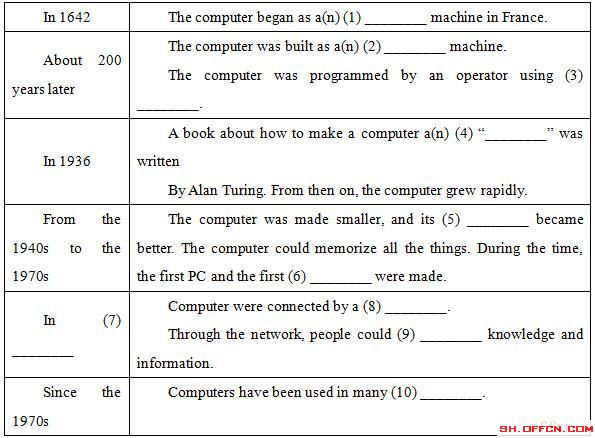
(Suggested answers: calculating, analytical, cards with holes, universal machine, memory, laptop, the early 1960s, network, share, ways)
(3) Enable students to see the changes of computers’ shape, and come to the inside of the computer. Then read paragraph 2 and fill in the blank. After that, present some pictures to help students understand the words easily.

(Suggested answers: memory, in Tubes, On Transistors, On small chips, small)
设计意图:在略读和查读过程中,学生在对整个文章的大意有了基本的把握,锻炼了学生快速阅读的技巧。通过任务型教学法,让学生仔细阅读文章,可以加深学生对文章的理解,也锻炼了学生对细节信息的获取能力。
4. Post-reading (5’)
(1) Ask students to retell this passage with the help of the information that we have finished in while-reading.
(2) Have an interview: Imagine the students meet Bill Gates when going out of the museum. Invite a student to act as Bill Gates, the others may ask him the questions like these:
① “Mr. Bill Gates, could you tell us in what ways computers are used now?”
② “Mr. Bill Gates, what do you think the future computers will be like?”
设计意图:根据已有信息复述文章可以加深学生对本课的掌握程度。设置采访活动,可以锻炼学生用英语表达的能力,让学生将所学的知识进行信息输出,加强说的训练。在采访的过程中,增强同学们的合作理念。



